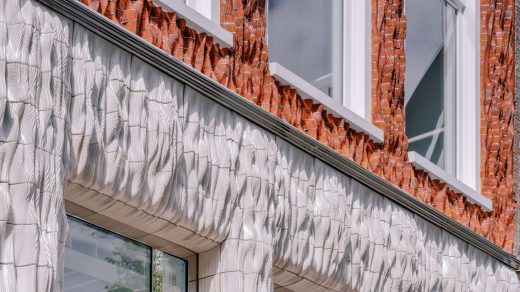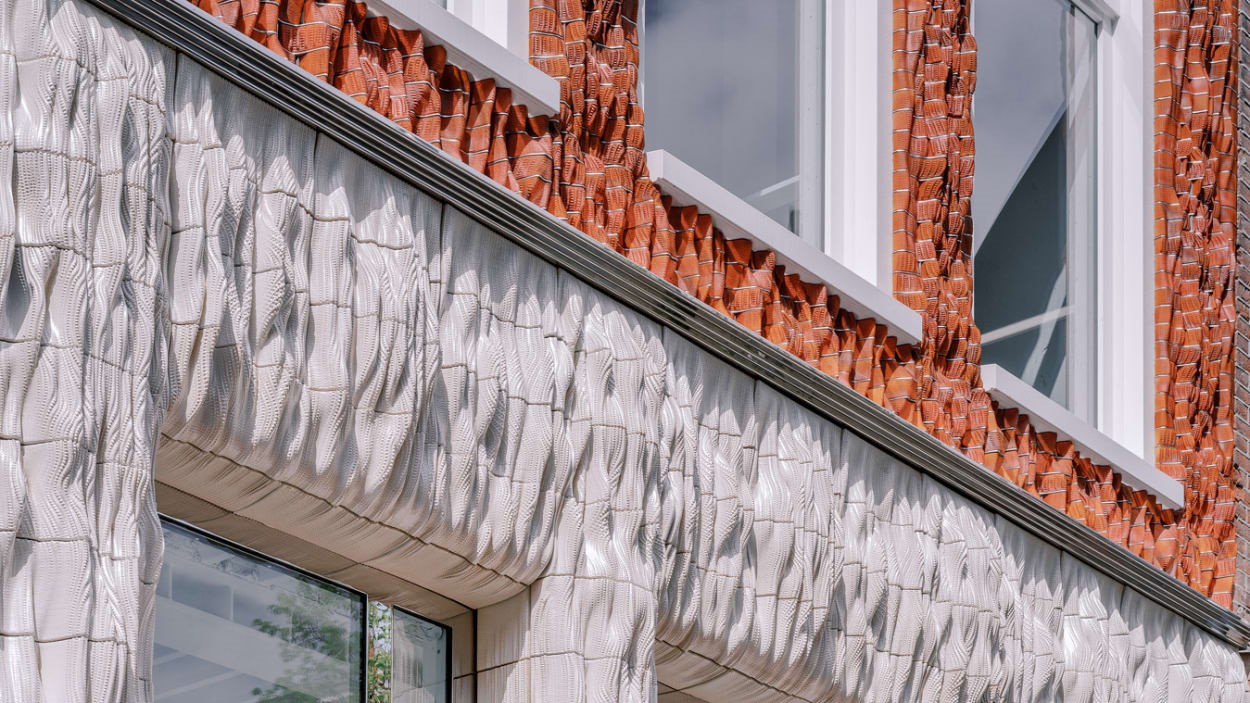3D printed bricks turn this Amsterdam storefront into a work of art
By Nate Berg
For anyone casually strolling along the luxury boutiques on central Amsterdam’s high-end shopping street, the storefront at 32 P.C. Hooftstraat might not immediately stand out. Like its neighbors, the store is a three-story townhome-style building with a converted attic and a snug, chockablock alignment with the rest of the almost identical buildings along the street. From the second floor up, bricks make up the facade, as they have on these buildings for centuries.
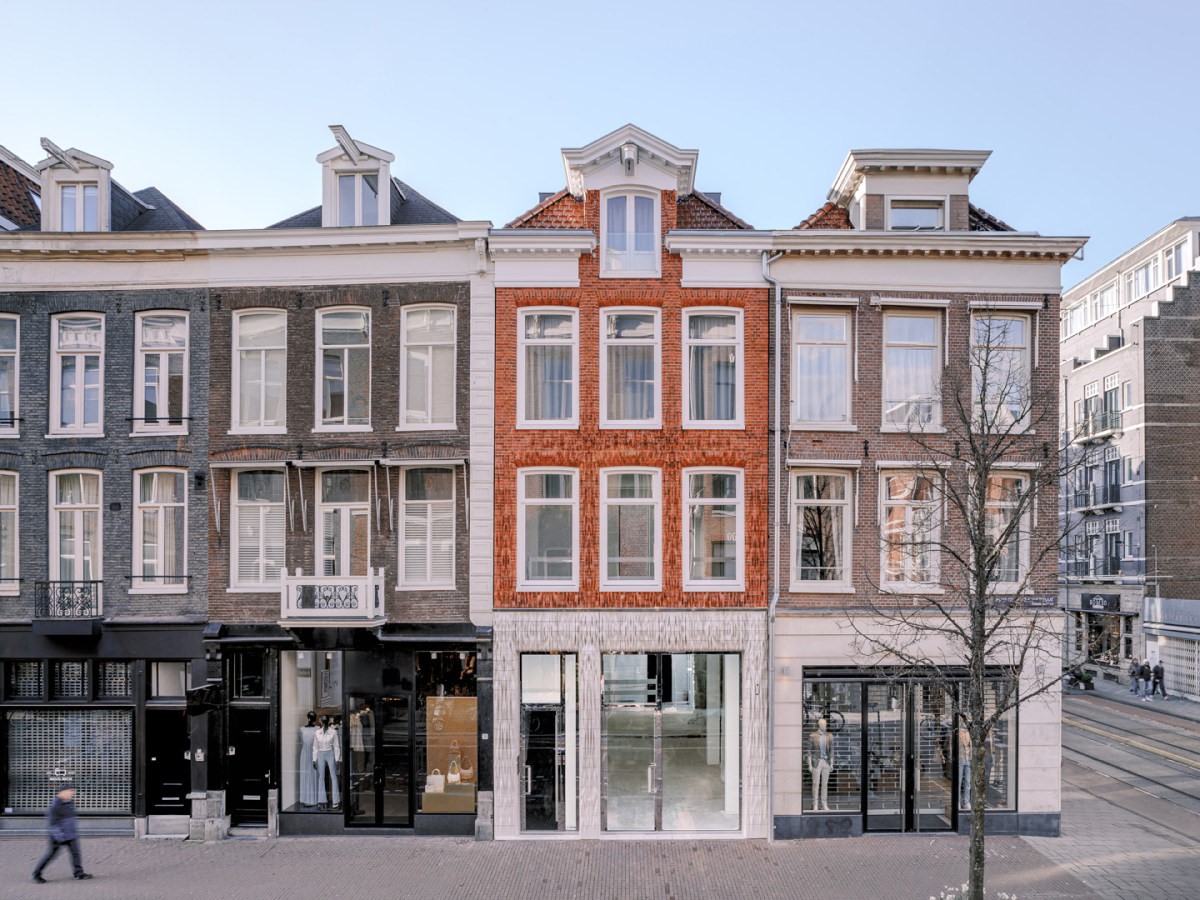
But with a closer look, something’s off. Like a glitch in the bricks, the facade of the building has a subtle but unmistakable ripple. Ridges run across the face of what, from a distance, seemed like conventional clay. Up close, the surface of the building juts out like bumpy mountain ridges on a topographical map. These are not your average bricks.
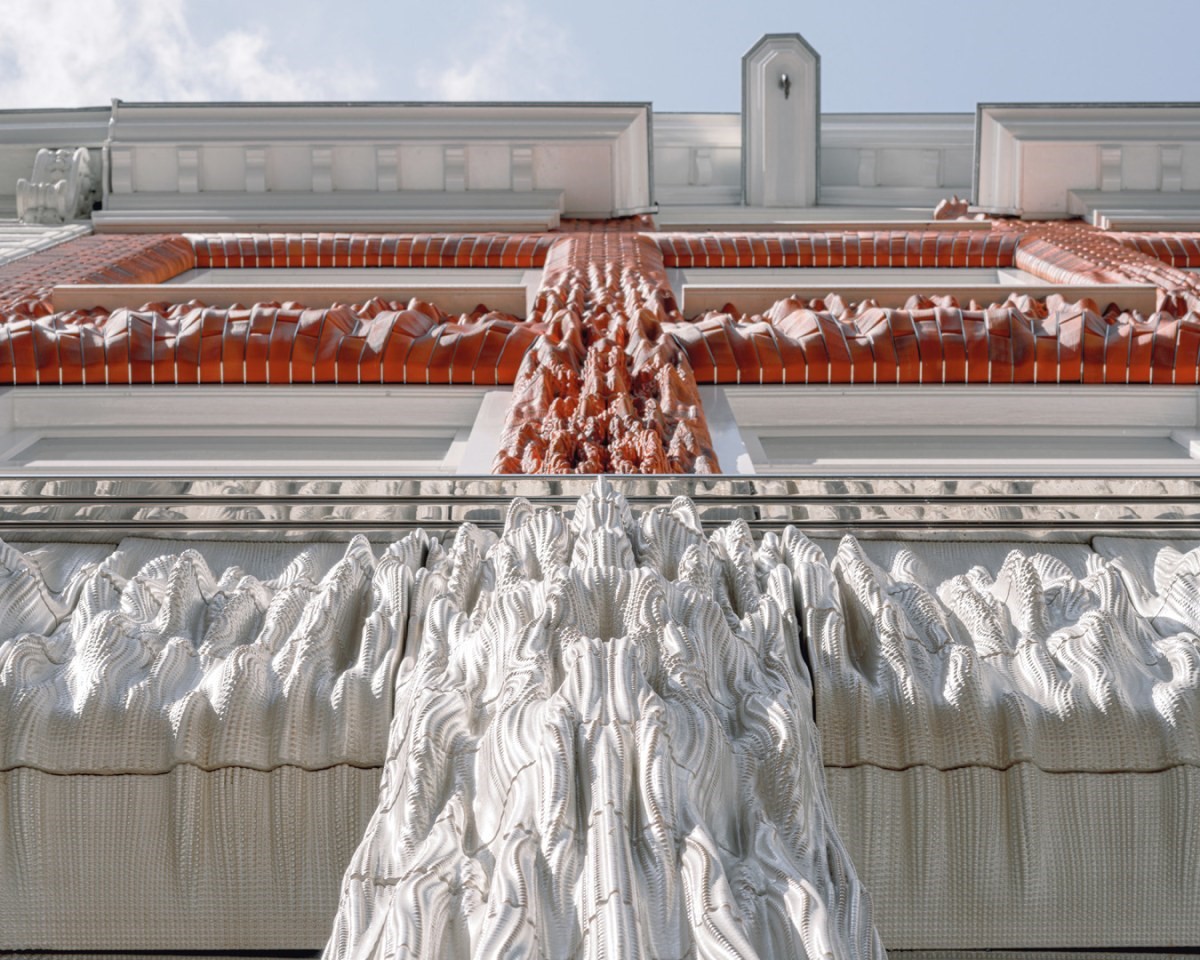
The facade of this building is actually made up of custom ceramic tiles that are designed algorithmically and 3D printed with specialized robots. Studio RAP is the Rotterdam-based architecture firm behind this facade, which extends down to the street level in white-glazed tiles that undulate like the waves of a very turbulent sea.
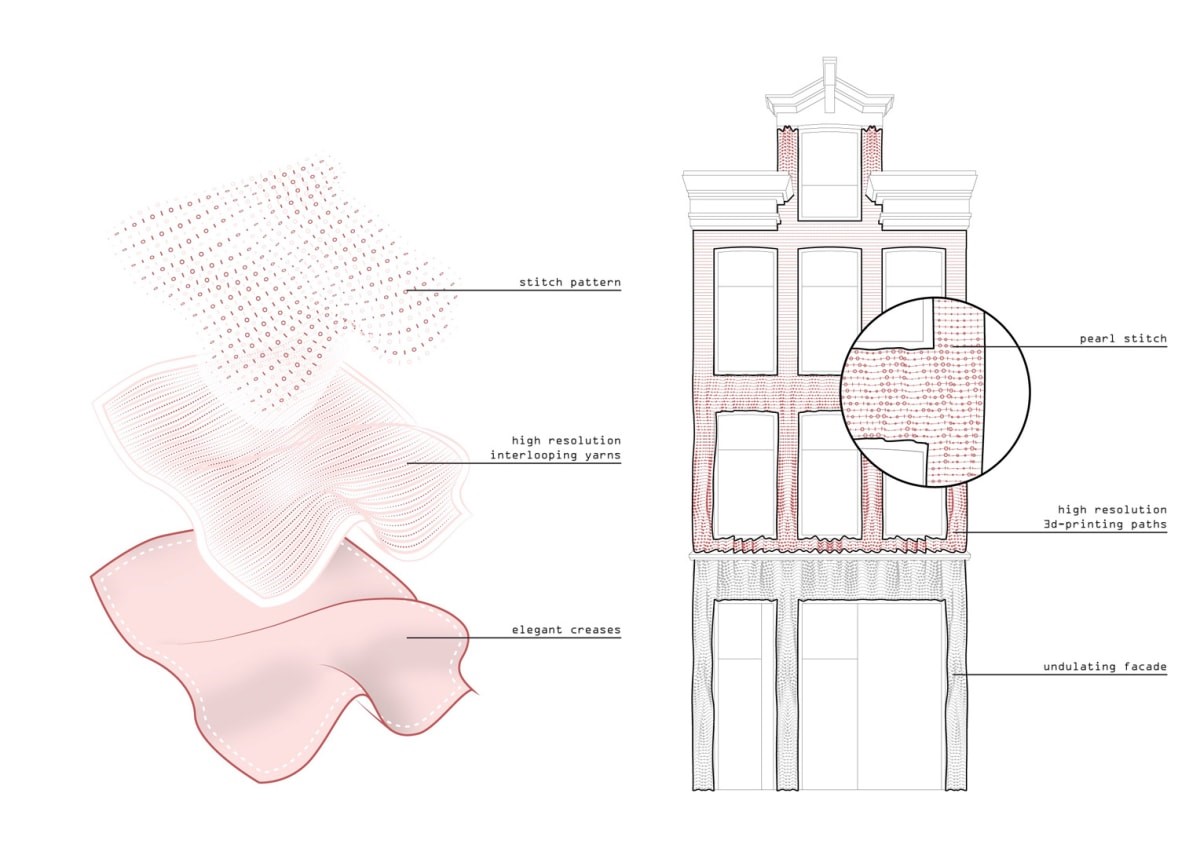
The facade is a unique application of 3D printing in architecture. While other companies have specialized in using robotic systems to build houses out of toothpaste-like sludges of concrete, Studio RAP is using a novel combination of computational design, specialized robotics, and finely tuned ceramic baking to create highly expressive facade materials. Designed to mimic conventional bricks and tiles, Studio RAP’s facades can turn the exterior of a building into a complex and beguiling spectacle.
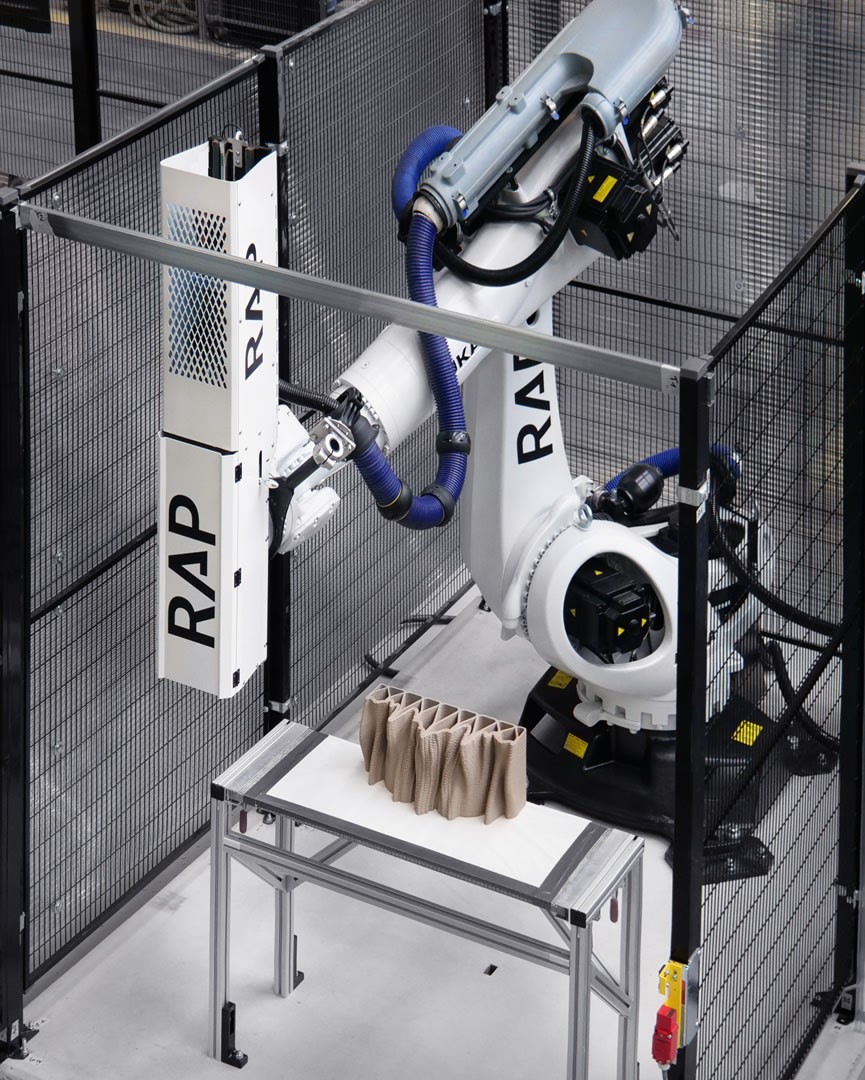
Studio RAP co-founder Lucas ter Hall says the basis of the design is computational, but the focus is always on the production of the physical end product. “We’re interested in how you can actually make these complex shapes,” he says.
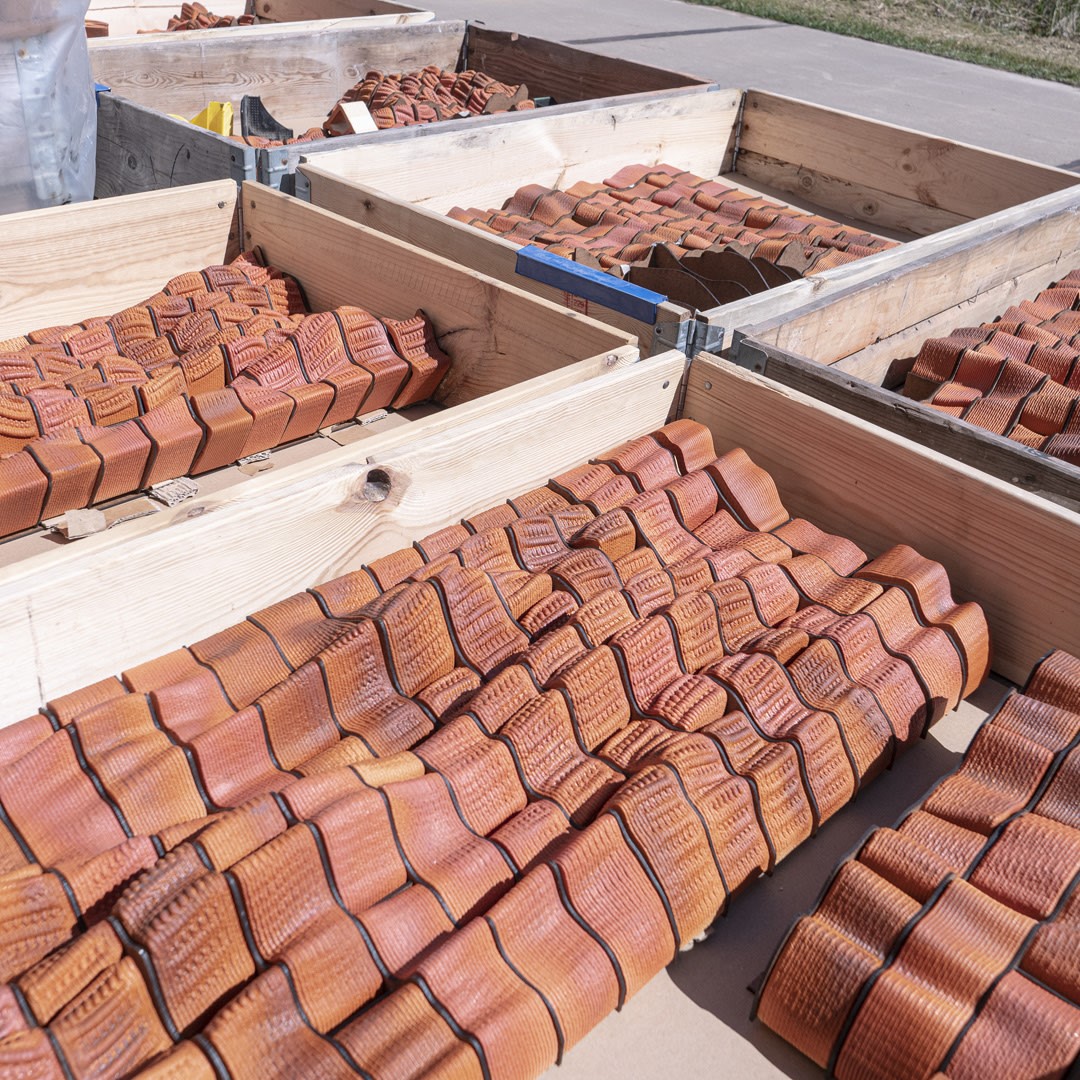
The firm has a huge warehouse with large industrial robots that it uses to translate algorithmically generated designs into physical objects. For the Amsterdam storefront, intended for high-end apparel retail, the designers used computational tools to create a rippled form inspired by the weaves and stitches of textiles. Ter Hall says the firm spent a significant amount of time tuning the algorithmic design in conjunction with the 3D printing and the clay glazing processes to generate a finished tile that accurately resembled cloth. On the upper section of the facade, the design replicated the shape and color of bricks to comply with city regulations requiring that new facades don’t clash with neighboring building exteriors. The ceramic brick-like pieces Studio RAP created align perfectly with those on either side of the building, but differ in their rippled, almost frantic surface.
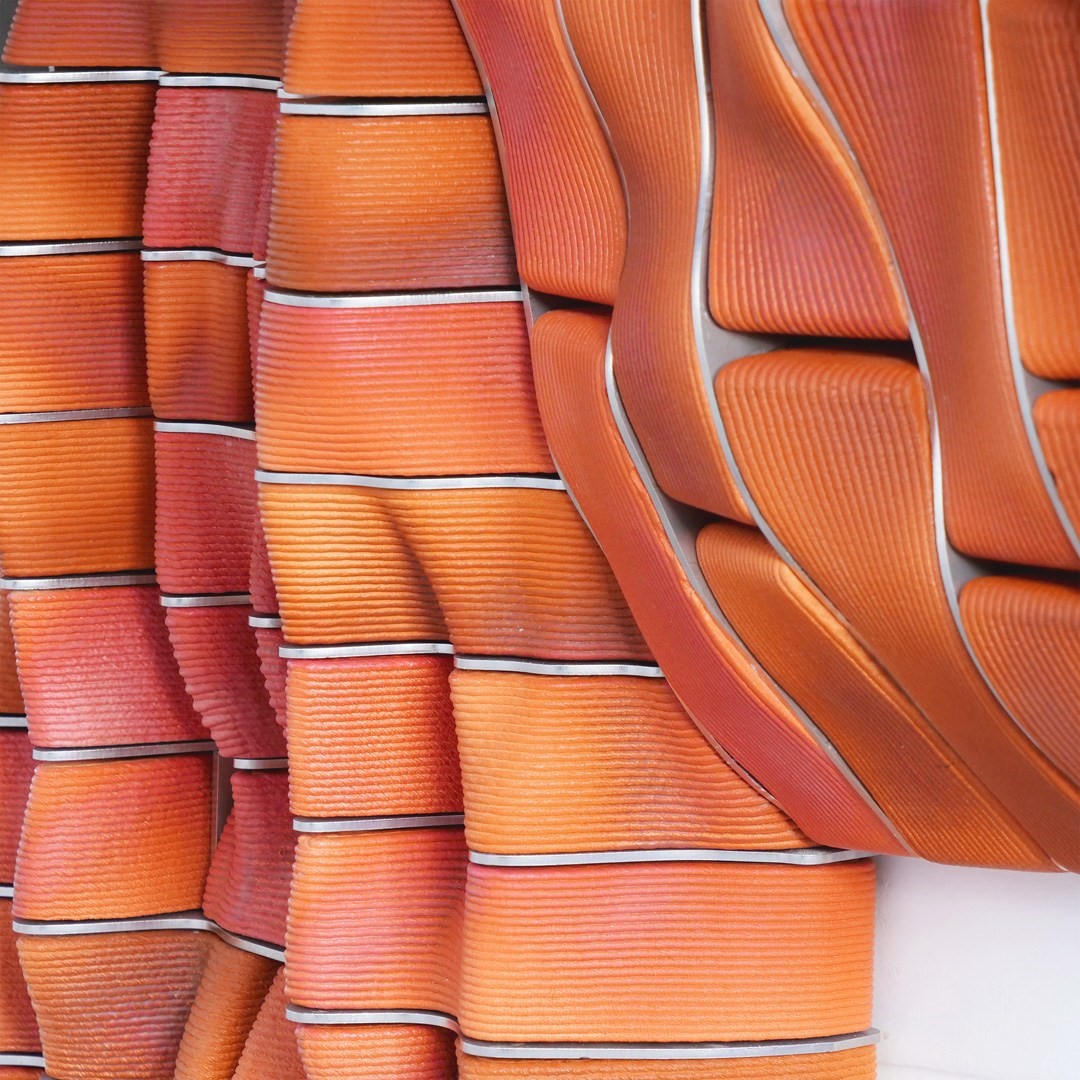
“Maybe you can think robots made this project, but it’s definitely not just copied and then printed out,” ter Hall says. “With this project we wanted to bring more detail back in architecture, and craftmanship.”
That required creating custom tools and processes to produce the tiles. “We developed our own software that creates tool paths for the robot from the geometry that we designed,” ter Halls says. The firm also created specialized nozzles for the 3D printers to produce the high level of detail in the thousands of tiles used in the project—each took about 45 minutes to print. “If you know what the robot can print, you know how expressively you can design.”
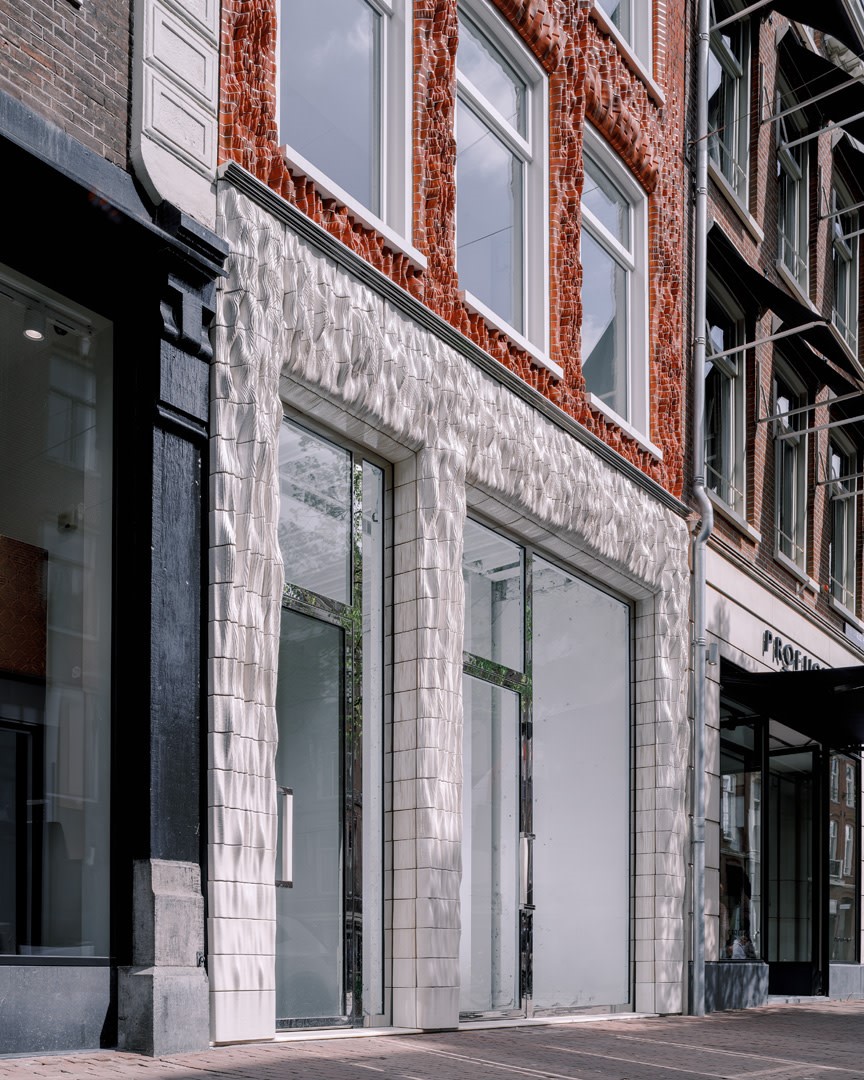
The Amsterdam storefront’s facade is one of a small but growing number of 3D printed projects from Studio RAP, which also designed and produced a bold blue ceramic treatment for the inside of two vaulted gates in the city of Delft. Ter Hall says the firm is currently working on more projects using this same technique, and he expects the time and cost to gradually go down. He’s hoping to take on projects even bigger and more complex than the Amsterdam storefront.
“We would like to have big projects, but not skyscraper size,” he says. “It’s our goal to challenge the technique, to create something really unique.”
(6)

